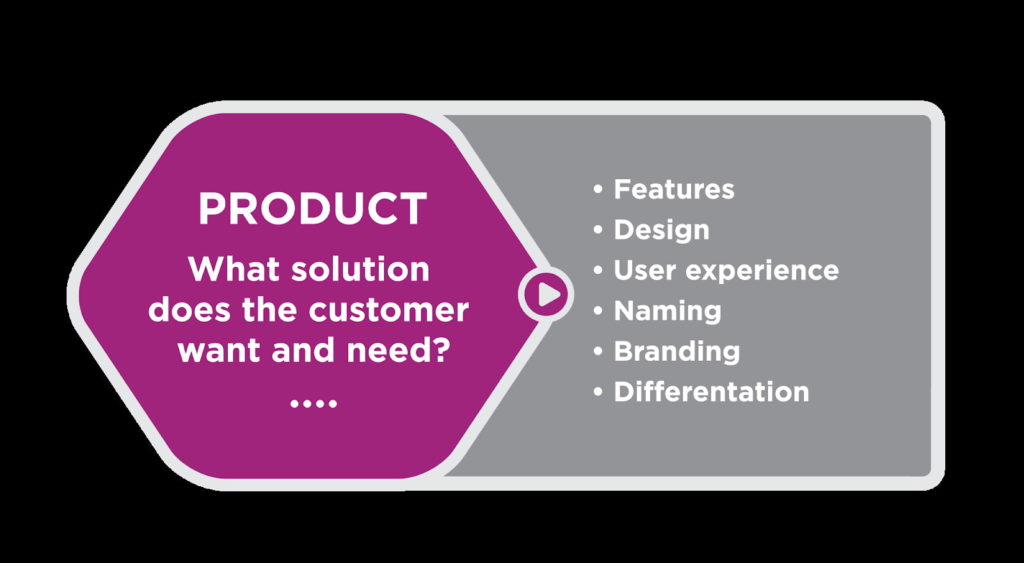If you want to create a marketing strategy for your business, you must know the basics of marketing and how it works. This includes a full understanding of the four Ps of marketing. So, what are the 4 Ps of marketing, and why it is essential for you to understand them?
Well, the 4 Ps of marketing help you craft a powerful and effective marketing strategy that covers all the aspects of marketing. If you don’t follow these Ps, it will negatively impact your sales both in the short and long-run.
What Are the 4 Ps of Marketing?
The 4 Ps of marketing (also known as marketing mix) are the pillars of a successful and effective marketing strategy that include product, price, promotion, and place.
These Ps help you craft a marketing strategy that covers all the necessary ingredients for success. These help you answer critical questions and improve your marketing strategy. The marketing mix covers your product, its price, promotion channels, and places where your ideal customers go to find your product.
The four Ps apply to both marketing strategies: Digital marketing and traditional marketing. Stick with these Ps and ensure you have a solid strategy for each to take your marketing to the next level.
Let’s dig deep and see what each pillar represents and what role it plays:
1. Product
Product refers to your core offer that could be a product or a service. It is the most crucial component of your marketing mix as all the other pillars depend on your product. You need to take several critical decisions at the strategic level related to your product such as the problem it solves, features, design, labeling, UX, name, branding, and others:

There are several critical questions that you need to answer to come up with an effective marketing strategy such as:
- What problem does your product or service solve?
- What are the main features of your product?
- How your product differentiates from competitors?
- What is the unique selling proposition of your product?
- Questions related to product size, color, design, packaging, and labeling
- The name and branding of your product
- How will users experience it?
These are some of the most important product-related questions. The last thing you want is to sell a product that nobody is willing to buy.
Unilever, for example, failed in Britain to define a clear USP for its PG Tips tea brand. The brand suffered a huge loss as compared to its rivals primarily because Unilever’s rivals in the UK tea market clearly established their selling points.
This is what happens when you don’t define your product and its purpose.
2. Price
It refers to the price you’ll charge for your product or service.
It isn’t as simple as it sounds. Pricing your product appropriately is one heck of a task. You need to ask yourself: How much a potential buyer is willing to pay for your product as compared to how much you want to charge.
You can put any price tag on your product, nobody is stopping you. If your target audience doesn’t consider the price fair, it won’t sell. There are several things you have to consider when pricing your product:
- Profit margin and breakeven
- How price sensitive your target market is?
- The lowest price you can sell your product for
- The highest price consumers are willing to pay for your product
- Pricing strategy of your competitors
- How much does the market leader charge?
There are two main pricing strategies that you can use: Market-oriented pricing and cost-oriented pricing:
Whether you go with market-oriented pricing or cost-oriented pricing, the decision must be well-thought. You can’t price your product based on mere judgment rather it must be priced strategically based on both internal and external factors.
3. Place
Place refers to the location where you want to sell your product and how you’ll deliver your product to the location you are targeting. It involves developing a complete strategy that will ensure the timely delivery of your product to the end-user at the right place.
You need to make sure that your customers can find your product easily. Choose the right distribution channels. For example, you can sell directly to your customers, you can sell via retailers, or you can choose to sell via wholesalers to reach geographically dispersed locations easily:
You can, of course, use multiple distribution channels simultaneously. Apple, for example, uses multiple distribution channels to make its products available to its users:
However, the most important thing to consider is where your target audience looks for your product. Do they search it online or visit a grocery store?
Here is a list of other key questions that you must answer to come up with a solid place strategy:
- How to best reach your customers?
- Do you want to sell directly to your customers or via third-parties?
- How are your competitors selling their products?
- What distribution channels are available for your product delivery?
4. Promotion
It refers to the marketing strategy you’ll use to promote your product. You need to identify the right promotion methods and channels. There are several ways to promote your product:
Identify the most appropriate marketing channels for promotion. It is essential to stick with the marketing channels that your audience uses to find you. For example, if you are targeting millennials, you need to stick with digital marketing as millennials spend 7.2 hours online per day, and 71% shop online via their mobile devices. It will be a bad idea to run a TV ad to target millennials:

Here is a list of the key questions that your promotion strategy must answer:
- What channels your primary target audience uses to find products and services?
- The best marketing approach to reach your ideal customers
- What marketing channels and techniques your competitors are using?
- The best time to promote your product
- What is the marketing message that you want to deliver?
Conclusion
If you are having issues understanding what are the 4 Ps of marketing, check out the following matrix and simply answer questions to create your marketing strategy like a pro:
No matter how boring it may sound, these 4 Ps of marketing are more important for your product success than you think. An understanding of these Ps and how to use them to craft a marketing mix strategy will put your business on the right track.
Featured Image: Unsplash






